#beringia
Text
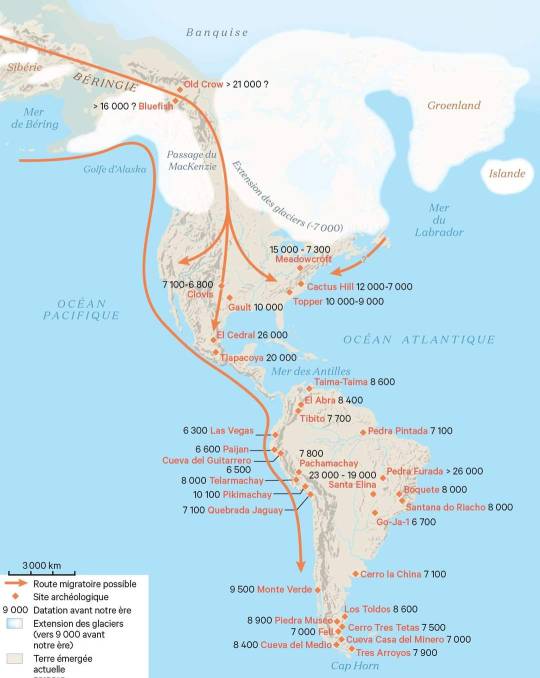
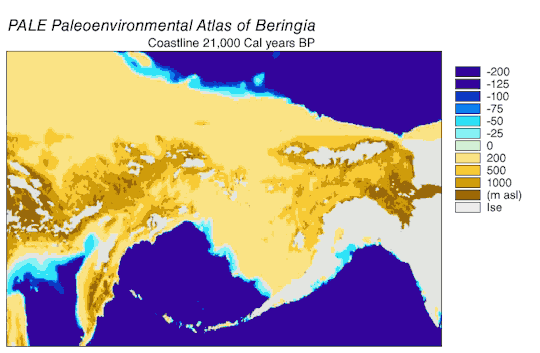
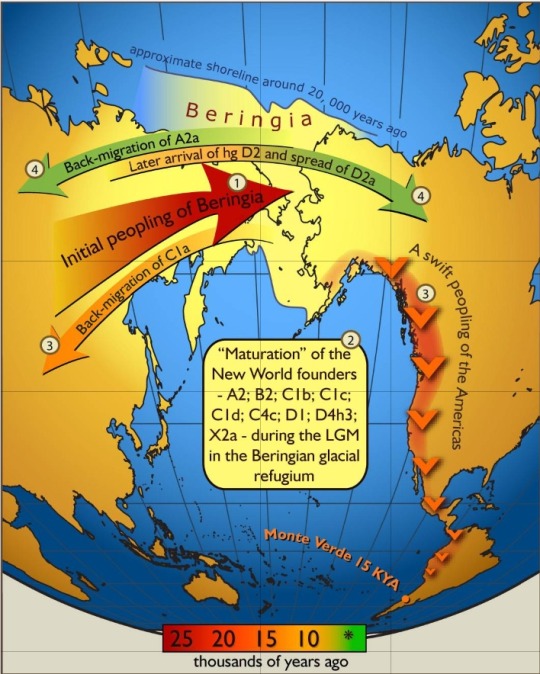
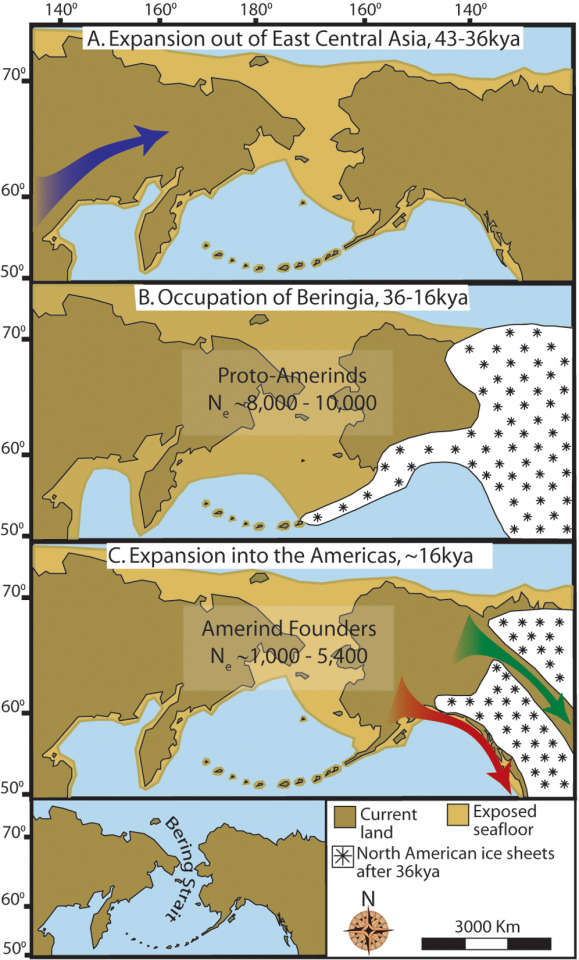

Some maps showing the probable peopling of the Americas.
#paleoanthropology#archaeology#first peoples#native american#beringia#nivkh#dna#haplogroups#meadowcroft
14 notes
·
View notes
Text

This map illustrates the geography of Beringia, the land bridge that formed between North America and Asia during the last glaciation. Humans crossed Beringia from Asia to North America during the glacial period depicted on this map. Lakes and drainages have been reconstructed to provide a better perspective on the environment of the land mass according to bathymetric data having a grid spacing of 1 km (100 m for Norton Sound). Some of the lake basins are shallow and may have been wetlands rather than open water bodies. Image credit: J.D. Bond / Yukon Geological Survey / Government of Yukon.
11 notes
·
View notes
Text
Beringia
One of the biggest and most taught misconceptions is that all Native American people traveled to the continent over the Bering strait that connected modern day Alaska to modern day Russia.
Now, it's undoubted that a number of people crossed the Lang bridge following herds of animals. However, it is also undoubted that many already resided in The Americas prior.
This theory was originally formed in the 1930s when a large number of clovis points were examined. This original theory dated the migration to 13,000 years ago. In the 1970s, this was pushed back to 16,000 years ago after further study. Linguists have since weighed in saying that the language diversity found in the Americas could have taken up to 50,000 years to form. Genetic tests also suggest that some tribes share genetic similarities to aboriginal Australians. The latest archeology findings show that man made tools were being used in Idaho as far back 18,000 years ago.
Some tribes have oral traditions that suggest indigenous people arrived in the Americas by boat. One Cherokee origin story believes the first people arrived on canoes. Fleeing from an island destroyed by natural disaster, 14 canoes set out, and only 7 made it to their new home. One of the Blackfoot creation stories says that the first man came floating in on a log. Many other tribes describe their people first coming from a great ocean or even from boats.
While I think there is a lot of research worth doing around the Bering strait, I'm not saying the theory is absolutely incorrect. I do believe that too much weight is put on it being the only explanation. Many people, even those who study history, still believe in the "13,000 years ago by the Bering strait" as the only explanation.
#native blogs#native american#indigenous#indigenous blog#indigenous history#muscogee#bering strait#beringia#native american history#native americans#north american history#history
0 notes
Text
Investigadores han vinculado los viajes de un mamut lanudo de 14.000 años de antigüedad con los asentamientos humanos más antiguos conocidos en Alaska, proporcionando pistas sobre la relación entre la especie icónica y algunas de las primeras personas que cruzaron el Puente Terrestre de Bering.
0 notes
Text



BERINGIA B.C. - 1, 2, 5 millions of dinars banknotes - private issue, fantasy banknotes.
#dinosaurs#dinozaury#dinos#banknot#banknote#Beringia#dinars#fantasy#fancy#for collectors#fantazyjny#fun#note
0 notes
Text
Every so often there'll be more scientific evidence that Native Americans have been in the Americas for thousands & thousands & thousands of years & the White reaction is always "it turns out Native Americans migrated even EARLIER than we thought!"
Like maybe.... and stay with me here..... maybe we've been here the whole time like we keep telling you
#like instead of just admitting maybe the Beringia Strait theory is wrong its always 'they were here EARLIER!'#why do you think that is.
103 notes
·
View notes
Text
the broader thesis of The Dawn of Everything so far seems to be "even before agriculture humans had really complicated and interesting societies," which seems pretty incontrovertibly true at this point. moreover, though they position this as in some sense novel information, i'm not sure how novel it really is: Göbekli Tepe was excavated starting in the 90s, Monte Verde and Pedra Furada (sites which basically proved the Clovis culture could not have been first in the Americas) were dated in the 80s, and they've been excavating Poverty Point (a site graeber and wengrow discuss extensively) since the 1950s. basically the viewpoint they're arguing against seems not to have been current for thirty years at least at the time of publication, and while i'm sure it's new to a lot of lay readers, you could be forgiven for thinking, based on the way they write, that they're challenging some kind of archeological orthodoxy.
#also there's a bit where they treat a random navajo informant's assertion that his people did not come via the clovis/beringia route#as being somehow reflective of authentic historical reality#and like i'm sorry random navajo man#i respect your culture and your traditions which are very ancient and important to you#but i do not think you are by virtue of your indigeneity actually especially knowledgeable about the paleolithic in the americas#it's a very weird moment
47 notes
·
View notes
Text
I swear this is related to Alaska just hear me
out on this - also this is quite a long post





Ok so. Uh. You see, Alaska is like, the only flag with nothing BUT a constellation, and Polaris, yeah there’s some pretty cool meanings in his flag but listen. The cloud figure is Beringia, the long gone land bridge ifkwim, but she blessed lil baby Alaska with a star, similar to how Raven gave some humans their stars to give them ‘beingness’ (how the native stories say) and so the star is in his eye, I think it’s neat!
#Thank u girlie friend for the star eyeball idea 🥺#Yes Beringia is his mum#Giant woman certified#We Stan her#wttt#wttt alaska#welcome to the table#ben brainard#welcome to the statehouse#oc#ocs#wttt fan art#wttt fanart#wttt headcanons#wttt oc
92 notes
·
View notes
Text
I know aliens have never colonized Earth because I'm an ethnobotanist. Let me explain:
Since humans have domesticated plants, they had spread them everywhere. Maize was domesticated somewhere in the Americas (it's a big debate where and how exactly but I won't get into that) but by the time the Spanish came in 1492, it was spread from North America to Argentina. And after that, it spread all over the world. Potato spread to Europe, wheat to the Americas, and such with every cultivated plant.
Now, crops are maintained by humans, it stands to reason that if no civilization maintains them, they will be gone and perhaps go extinct from their introduced places. However, that's not the case for many, many other plants. Delonix regia, an ornamental tree we call the Chivato Colorado here, has adapted wonderfully to tropical and subtropical South America, despite being native from Madagascar. if tomorrow, humans were gone, it's believeable that chivatos would be still there and spread over the continent. Same with so many plants and animals, many of them introduced accidentally, coming in the mud of boots or water-logged ships. Surely you are aware of an amount of invasive species by current human activity.
This would even happen if aliens are not interested or unable (see below) to use earth species for agriculture. If there was a global alien civilization (not some limited enclaves), species would spread from here to there, even by accident, and we WOULD see some traces of it in the fossil record; there is no way even the most careful culture would avoid every single event of invasive species (as for alien invasive species, see below). While in fact, biogeography corresponds to continental drift (Gondwanan distribution, Eurasian distribution, etc.) and other spread such as floating rafts or island jumping. You don't see South American dinosaurs spreading to North America while it was an island continent, but crucially, also no plants spread. The spreading of plants is, in my opinion, one of the most lasting signs of our current civilization, and it will last long after we are gone.
Now, it's possible that alien cultures might have visited us in the billions of years of Earth's living history, after all, a planet with life is attractive. But unlike space strategy games, planets with alien biospheres would be "uncolonizable". Leaving aside the possibility of amnionia or silicon or such based life, even an alien species parallel to us, with DNA and water-based metabolism, would find our biosphere to be allergic or even toxic. We can't digest D-especular aminoacids or L-sugars, and in fact we only can digest a limited number of compounds. Most life on Earth is unpalatable and even downright toxic to us, actually: if it seems otherwise, it's because we domesticated and use the plants and animals that are the most palatable to us. If we found an alien planet where biochemistry is just a little different, the most likely result is that life there would be toxic, allergic, or totally incompatible to us (even alien microbes or parasites would be unable to harm us in the conventional way, after all, they are adapted to their own hosts and ecosystems). Instead of being places to colonize like in so much (manifest-destiny inspired but that's another thing) science fiction, they would be basically unliveable places. Perhaps you would have better chance to live in a planet like Mars or a self-contained space colony than to live in a world where everything is toxic. Any alien species left here (say, crops or pet animals) would starve to death by the simple fact Earth's biochemistry would be incompatible with them.
It is possible that there have been visitors to Earth in the billions of years it has been *alive* (the response is actually "how likely are complex life and civilizations to arise" which nobody has the answer to) But if they were, they probably were explorers, probably completely automated ones, not settlers, that left no trace in the fossil record. Perhaps somewhere there's an Animal Planet documentary about Earth, who knows... But... If Earth was settled long ago by an ancient alien civilization, we would see traces of it everywhere, and I'm sure whatever comes after us will see our own traces. But we haven't seen a single biogeographical trace for it.
Except for that fungus that grows in Texas and Japan. Maybe aliens really liked that one.
#cosas mias#aliens#botany#enthobotany#astrobiology#my opinion on that fungus: it was an species widespread across Eurasia and North America through Beringia that then had its habitat reduced#and now it's found in a few enclaves but it's remarkably conservative so it remains the same species#(kind like the Chinese and American alligator. Yes there are alligators in China)
54 notes
·
View notes
Text
I wish I had the time and energy to write a well-cited Tumblr post about the peopling of the Americas and about the two main theories, ice free corridor vs coastal migration, and why we're leaning towards coastal migration currently, but regardless. Yes, Beringia is real and people lived there for thousands of years and it was the first stop in the migration further south in both theories.
#I think Beringia is so beautiful.#A place that humans and animals lived for thousands of years that doesn't exist anymore#Populations seperated water#Which could theoretically still be crossed in modern times when the conditions are right#Please don't slander Beringia
7 notes
·
View notes
Text
missing beringia hours
0 notes
Text

Crow Makes World - August 2023
The Yukon Beringia Interpretive Centre is located in Whitehorse, Yukon Territories. There are many interesting exhibits there including this complex bias sculpture of “Crow Makes World.” Almost all of the indigineous peoples of the far north have creation stories in which the Crow… or sometimes the Raven… creates our world. The entire story of the Crow creating the world is told in this image. The longer you stare at the image, the more of the story unfolds from the images and symbols. It is a very interesting way to pass on the ancient stories of the people.
MWM
0 notes
Text
Pleistocene extinction is an uncomfortable topic for me because the causes are not fully understood, but the likelihood that humans played a role in the extinction of Pleistocene megafauna brings out a nasty side of people where they're like "as you can see, humans kill everything they touch and destroy ecosystems wherever they go"
In particular they are often specifically talking about megafauna of the Americas, Australia, Madagascar or other islands. (this idea is usually paired with talking about people crossing the Beringia land bridge). It's all the exact places where indigenous peoples have been trying to assert their rights to their own land
Furthermore, the "holocene extinction" idea treats the current biodiversity crisis created by colonialism and capitalism as equal to the extinction when the Ice Age ended.
If we accept the proposition that the end-Pleistocene extinctions were caused by humans and that this quality means all of the "Holocene extinction" shares a common cause, that treats environmental destruction and exploitation as a fundamental effect of human presence, instead of a result of policies and systems of power that are not inevitable.
4K notes
·
View notes
Text
The Ice Age wasn't always so icy. There were warmer periods and about 50,000 ya this Camelops (Camel face) roamed the Northern Yukon. The plants represented were inspired by a tweet from the Yukon Beringia Interpretive Centre which listed the many seeds found in the nest of an Ice Age ground squirrel.

2K notes
·
View notes
Text
Time to show love to Bactrian camels, who seem to never show up in American productions about the Silk Road, even though those are 100% the camels that would be doing that run, because they are from Central Asia, where that whole thing is.
...Probably because there are tons of Arabian (one-humped) camels in North America, because they were brought over here as part of various historic schemes that didn't pan out, and they do well in our deserts. And I love them, don't get me wrong.
But tonight, this is about the two-hump love.
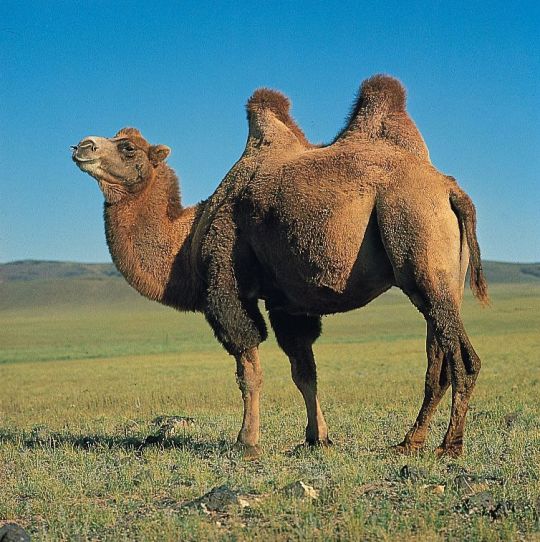




Also, all camel skeletons look like this:
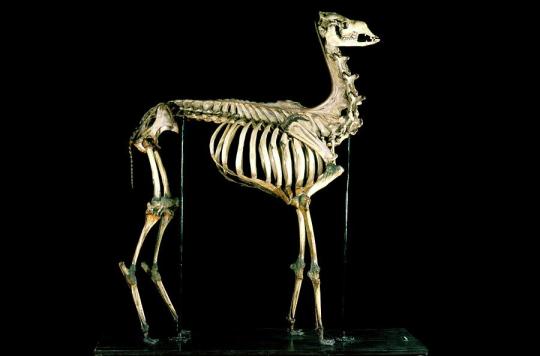
So best of luck with those reconstructions, future paleontologists!
Also, these Bactrian camels are from a totally domesticated breed. There IS a wild species of Bactrians, and there are only 1000 of them left, and they look like this:

Funny thing is...they aren't the ancestors of the domesticated ones. The domesticated ones have an extinct ancestor that split off from these a million years ago. There was just another two-humped camel we domesticated, then it went extinct. The wild ones now are the distant cousins of that, and are now nearly extinct themselves.
Oh, and fun fact: camels evolved in North America. They were a temperate grassland animal. Then they crossed Beringia into Asia at a time when that was possible, spread to Europe and Africa, then went extinct in North America and Europe, until they only existed in Africa and Central Asia.
So the ones from Africa / the Middle East that live here in our deserts now are basically like white people who now live in Sub-Saharan Africa.
...This post got complicated.
Oh, biology!
69 notes
·
View notes
